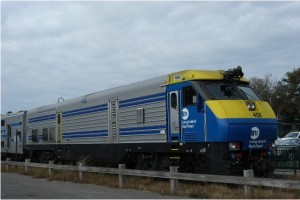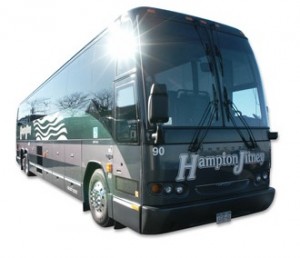Getting to the Hamptons – Transportation explained
 How you get to the Hamptons is nearly as important as where you stay and who you see when you’re there. The stretch of Long Island known as the Hamptons is located about 75 miles east of Manhattan—far enough that it feels like you’re getting away, without spending your whole week in transit.
How you get to the Hamptons is nearly as important as where you stay and who you see when you’re there. The stretch of Long Island known as the Hamptons is located about 75 miles east of Manhattan—far enough that it feels like you’re getting away, without spending your whole week in transit.
But that does present some transportation challenges, especially since so few New Yorkers own cars. The fastest, most eco-friendly and efficient way to get there is the train. No getting caught in traffic, plenty of room to stretch out and walk around. The cheapest way to get there is the bus at $36 round trip, you’ll have enough left over for some shopping in the Hamptons as well.
Train
From Penn Station, the Long Island Rail Road (LIRR) is the easiest way to get out of the city and into the tranquil beach and barbecue surroundings of eastern Long Island. The LIRR takes about two hours to get to the closer portions of the Hamptons, about three to get to the outer reaches and leaves
Cost: $40
Time: 2 to 3 hours
Phone: 1-718-217-LIRR, 1-516-822-LIRR or 1-631-231-LIRR.
Tickets: Official LIRR ticket page
Added benefit: Sail smoothly past traffic even during the heart of rush hour. The LIRR, which began in 1834, is the oldest railroad still operating under its original name.
Bus
The Hampton-Jitney is the preferred transportation for business travelers, the bus service picks up from Downtown on weekends and sends over 20 round trips between Long Island and Manhattan each day, more on high traffic days. The bus often sells out though, so reservations are required and honored until five minutes prior to the scheduled departure.
Jitney’s main competition is the Hampton Luxury Liner which runs a similar schedule.
Cost: $36-$53 round trip, bulk value packs available for less
Time: Approximately 3 hours
Added Benefit: AC plugs for laptops let workaholic business travelers feed their addiction.
Car
Take the Long Island Expressway to the Montauk Highway (Route 27 East) which runs through the rest of the neighborhoods that make up the Hamptons. Google Maps is especially bad at navigating this route, so don’t rely on your iPhone or Blackberry.
Cost: Assuming 210 miles, $3/gallon and 22 mpg, $28
Time: 1.5 hours to 3.5 hours or more depending on traffic
Added Benefit: Turn Timberlake way way loud and no one knows the difference
Taxi
It’s going to be a hefty fare, but lucky for you, prices are negotiable for rides outside the city limits. Unfortunately, taxi drivers are master negotiators and you’ll have trouble getting them under $300.
Cost: Negotiable
Time: 1.5 hours or more
Added Benefit: Talk about your ridiculous ride at parties later; get to know a cabbie.
Helicopter
The most convenient way to Long Island from your high paying, busy, corporate job downtown (if you’re taking a helicopter you’d better have one) is a rented helicopter. From the heliport, the ride out is only 45 minutes and no chance of getting stuck in traffic.
Cost: $450 each way with five passengers or $2100 for your own ride
Time: 45 minutes
Added Benefit: Life doesn’t get much better.
Plane
Cheaper than a helicopter (you’re worried about cost yet you’re taking a plane?) Sea planes fly to Long Island from NYC and are limited only by the weather and the number of passengers and the weight of their luggage. Or, if you have your own plane, there is an airport three miles west of East Hampton. The FAA identifier is HTO. Your pilot should be able to handle the rest.
If you want to take a standard commercial flight from somewhere elsewhere in the country you can fly into either JFK or La Guardia and take any of the above methods of transportation, or fly into Albany and rent a car. You’ll be in the Hamptons right about the same time once you factor in getting out of the airport and out of the city and from Albany, you’ll get to drive through beautiful upstate New York.
Cost: $365 for a sea plane, commercial flights vary
Time: Quick
Added Benefit: Statistically safer than driving